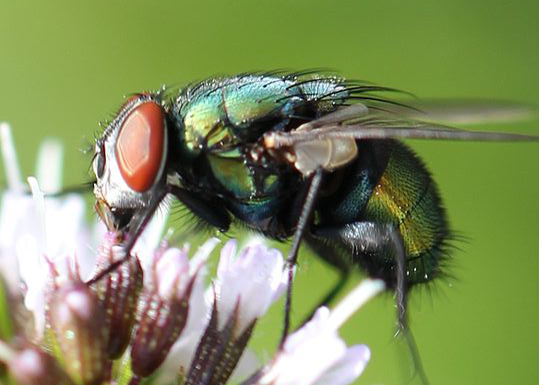Blow/Bottle Flies
Calliphoridae
Identification
- medium-sized and robust with a metallic appearance
- metallic-looking green and blue are common forms
Nesting Habits
- eggs may be laid on dead animals, garbage/dumpster receptacles, decaying organic material and manure
- many flies indoors may indicate that an animal has died in a wall void or somewhere within the building
Diet
- larvae feed on on animal carcasses, garbage, decaying organic material and manure
Significance
- can spread disease through contact
- nuisance inside buildings
IPM Recommendations
- Keep exterior doors closed, install screen doors, or install an automatic door closer, especially on doors leading into the kitchen.
- Keep screens in good repair.
- Improve sanitation.
- Keep dumpsters at least 50 feet from the building.
- Locate breeding susbstrate, if possible, and remove.
- Keep trash cans, dumpsters and garbage areas clean and free of odor.
- Close lids on dumpsters and garbage cans.
- Exclude fly entry via caulking, weather stripping, door sweeps, etc.
- Properly place light traps to catch flies that come indoors.
- Use a fly swatter.




